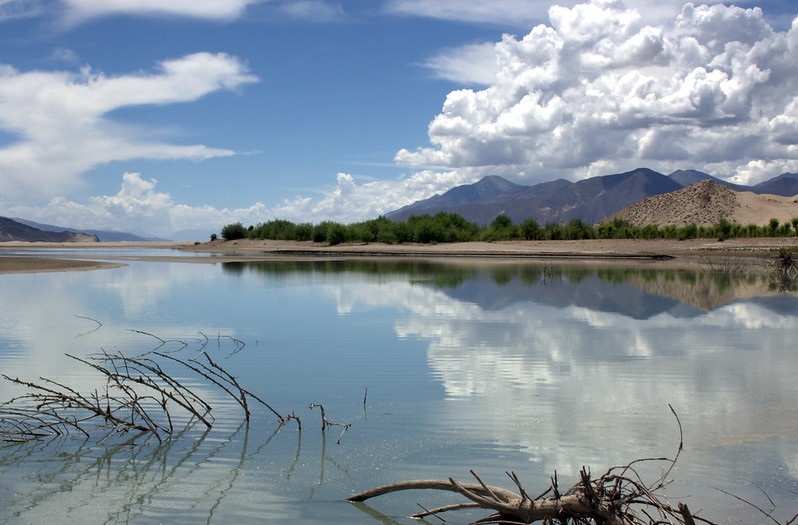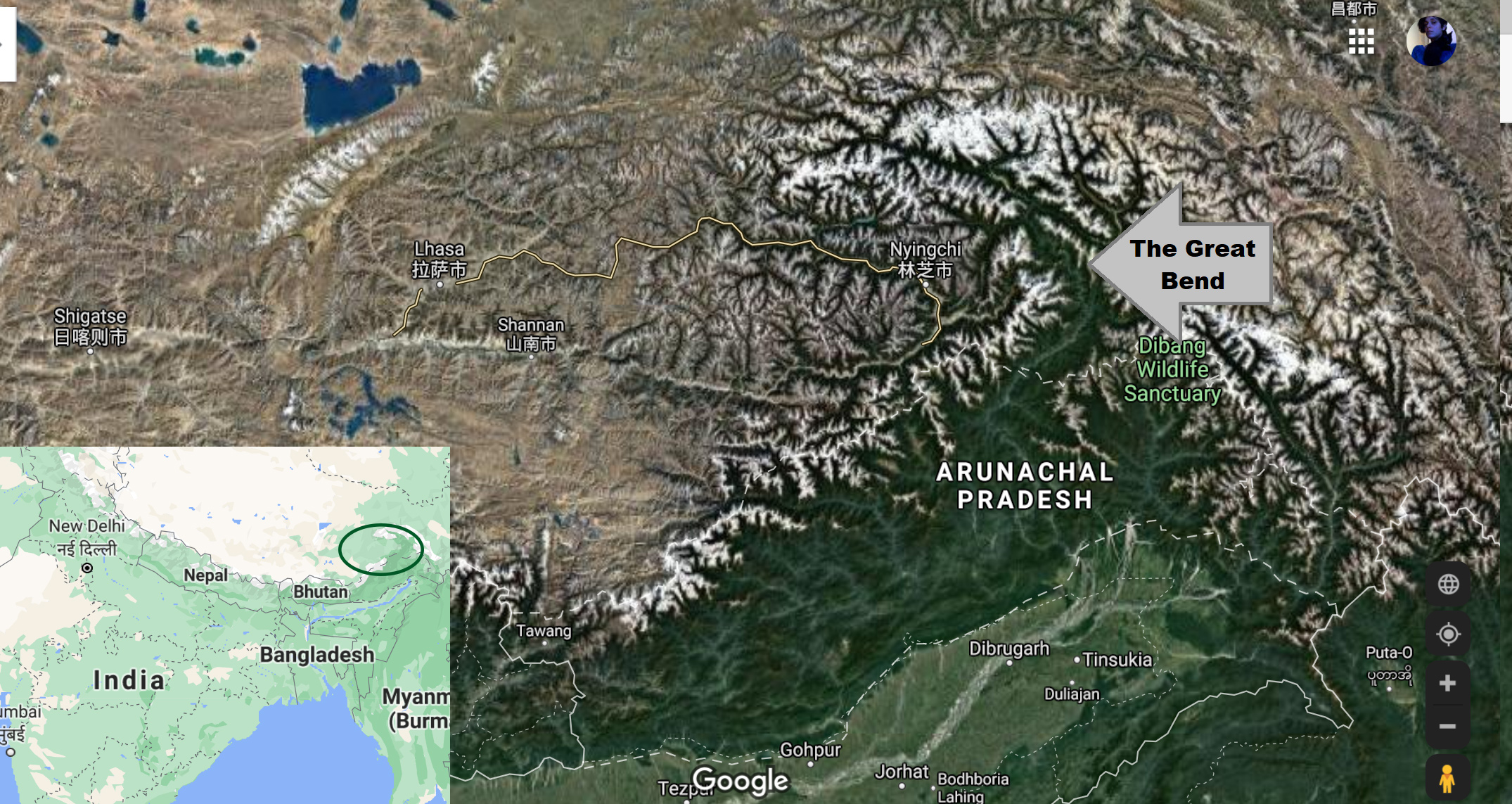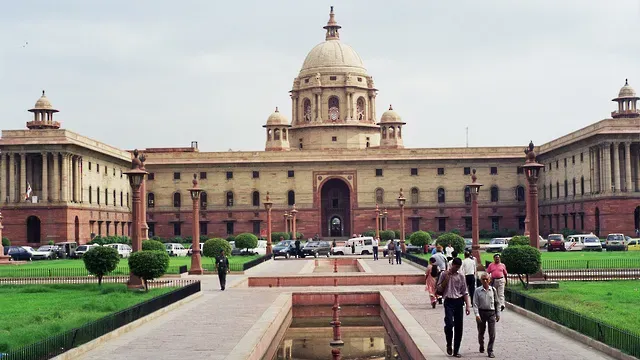Dam warfare: What China and India's rival mega-hydro projects mean for South Asia
As climate change eats away at the region’s glaciers, neglecting cross border cooperation will prove extremely costly

Welcome to today’s Lights On, a newsletter that brings you the key stories and exclusive intel on energy and climate change in South Asia.
Today’s story is so complex and politically charged that I ended up with tons of additional material that didn’t make it to the final article. If you want to know more, just reply to this email and hit me with your burning questions - If there’s interest, I may write a follow up.
And if you are not a member, please consider supporting one of the very few sources of climate and energy news putting India and South Asia under the global spotlight.

The Yarlung Zangbo in Shannan - Image credit: Flickr/Preston Rhea
The Great Bend, the remote Himalayan corner where the Brahmaputra river spins 180 degrees with a 2,000-metre drop from Tibet into India, is the unlikely battlefield of the latest diplomatic spat between China and India.
On Sunday, Chinese media announced that a local hydropower developer had been given the go-ahead to plan the construction of a mega dam on the lower reaches of the Brahmaputra, or Yarlung Zangbo as it’s known in Tibet, in reports that also mentioned the untapped potential of the Great Bend.
According to the Chinese state owned Global Times, the chairman of the Power Construction Corp of China said that China will "implement hydropower exploitation in the downstream of the Yarlung Zangbo River", adding that the project was part of the country's 14th Five-Year Plan of policy recommendations for 2021-2025. The new hydropower development will have a capacity of 60GW, chairman Yan Zhiyong said – vastly surpassing the world’s biggest existing plant, the 22.5 GW Three Gorges Dam in China.
The geography of the Great Bend area means that even a big hydropower development would not significantly alter water flow, because a large part of the river receives water from India as it enters its territory, and simply using water for energy and not, for example, irrigation, doesn’t reduce the flow downstream. But when it comes to shared waters, whatever happens upstream always matters downstream. Whether it’s potential environmental disruption or shared weather and hydrological data, water cannot be managed in isolation, and can be used as a weapon when its supply is altered.
Potential retaliation
As Indian Twitter burst with punditry and hot takes hours after the first report, T.S. Mehra, a senior official of India’s water ministry (Jal Shakti) announced that India was also considering a 10GW hydropower dam on the other side of the border. “Our proposal is under consideration at the highest level in the government,” he told Reuters, adding that the plan would create a water storage basin large enough to offset the impact of Chinese dams on flows.
But how realistic are these threats? And what do they really tell us about the nature of the China-India border conflict?

The Brahmaputra, which flows through China, Bhutan, India and Bangladesh, is one of the largest rivers in South Asia, and a historical frontline for the two biggest economies. But the Great Bend, one of its last untapped corners, is different.
First, “it is so far away from any sort of human settlement”, says Aditya Valiathan-Pillai, a specialist in regional electricity trade with the Delhi think tank Center for Policy Research.
“It is deeply, thickly forested, heavily biodiverse, it's probably one of the last areas that the colonial explorers reached back in the fifties… Building a dam anywhere in the Himalayas, it's hard. And building a large dam in those circumstances will be quite a challenge.” He says that everything about this story, from the might of the feat to the haziness of the news reports coming from China, inspires scepticism.
“So this whole thing to me seems like the kind of ephemeral signaling and political messaging that comes out of a very low point in the bilateral relationship between the two countries,” he says.
Unrealistic plans
Ashok Swain, professor of peace and conflict research at Uppsala University in Sweden, who has written extensively about border conflicts in South Asia, also says that the threats are unrealistic and probably short lived. “As I understand, it is just an empty threat as there is a lack of hydropower demand in the region,” he says. “China has stopped several proposed hydropower dams due to less demand on the Nu-Salween [river] upstream.”
India’s retaliation plan is also outlandish, he says. “You don’t build a dam on the downstream without any agreement with the upstream country.” This will be “simply suicidal”, he says, in an area that is also prone to earthquakes. “But in India, who will be ‘anti-national’ and ask this question?” he says, referring to the label widely deployed online in India against anyone who questions the ruling party’s line.
Whether it’s about building dams, solar plants or simply clearing space for military outposts, border conflicts across the Himalayas are historically entrenched with the natural environment. But as climate change eats away at the region’s glaciers, and in turn affects water sources that feed 1.6 billion people downstream, neglecting the need for cross border cooperation may soon prove extremely costly.
Very real dangers
“Beneath all the security messaging,” Valiathan-Pillai says, “how are India and China going to manage climate change through a bilateral relationship that is constructive, not destructive?” This, he says, happens at multiple stages. Globally, India should join forces with China to present a more progressive front on the international stage - something China is already leading the way on with its 2060 net zero target.
At the regional, South Asia level, both countries “need to talk about how to manage the impacts of melting Himalayas, increased flooding and more, because both of them now have a stake for better or for worse”.
Of all the conflicts flaring up across countless corners of the Himalayan mountain range, those along the Brahmaputra chiefly embody the regional nature of the problem. Shahab Enam Khan, a security analyst and a professor with the Department of International Relations at Jahangirnagar University in Dhaka, says that the latest controversy “will once again put pressure on Bangladesh, which is a lower riparian state.” The Brahmaputra, he says, should be seen as an international river, that shouldn’t be managed by the myopic interests of policy gurus.
Examples of integrated planning include the Mekong River Basin or the Blue Nile basin, Khan says. “These rivers flow through countries with complicated bilateral relations, where water, fish, sediment, and other valuable resources all travel from one country to the next, and the ecosystems are highly connected.”
While a full de-escalation seems an unrealistic ask, countries should be pragmatic enough to keep military issues on the side and develop a stable, long term track on environmental security, Valiathan-Pillai says. “This could be at the level of scientific collaboration on glacial melting in the Himalayas, because that is a shared transboundary ecosystem,” he explains. It could also be knowledge exchange on technology or mitigation. “There are so many things that could benefit people in both countries. But they don’t get done because people are so bogged down in this sort of [national security] messaging.”
That’s all for today! If you like what you read, consider sharing this newsletter with a friend or two:



